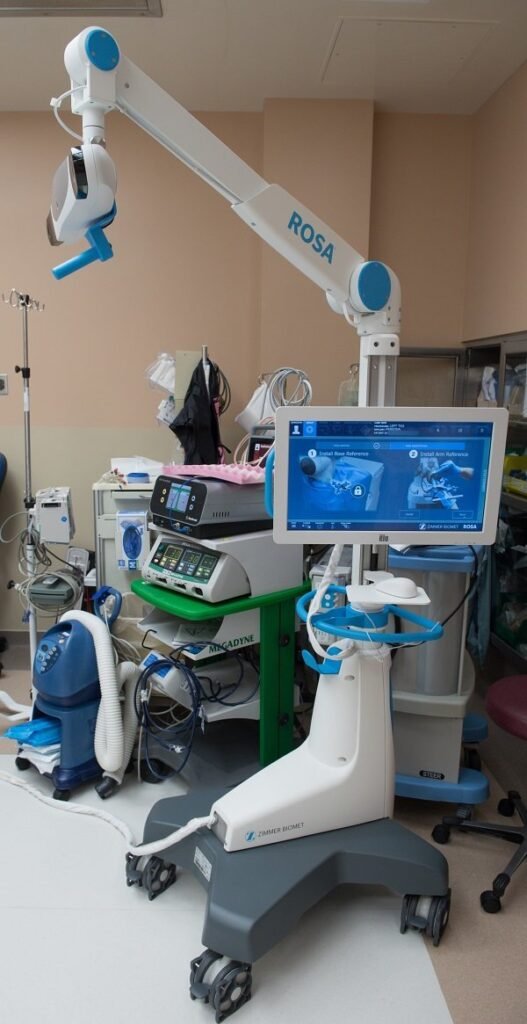Revision Spine Surgery in Pune: Expert Care at Orthos Centre
Revision Spine/spinal surgery as the name prompts, is a surgical procedure that is necessary to be performed to often correct and/or adjust the complex and challenging outcomes from a previously performed spine surgery.
Along with correcting previously unsuccessful or more challenging spine surgeries, a Revision Spine Surgery can also be performed to correct a neck and/or back surgery that may have delivered underwhelming or even unpleasant outcomes for the patient and may not have shown signs of recovery as well as expected.
Sometimes a Revision Spine Surgery can also be performed to wholly address the core problem that may have led to the previous surgery in the first place, or fix complications that may have arisen due to diagnostic errors, hardware malfunction, or even lack of recovery and/or effective rehabilitation after the first surgery.
Advantages of Revision Spine Surgery
- Helps with pain relief and discomfort caused because of the previous surgery. Improves mobility and agility in the patient.
- Pain relief from the initial condition and reducing recurrence of the same.
- Improved quality of life, helping the patient resume activities they love doing the most with more ease.
Who can opt for Revision Spine Surgery?
People who suffer from a condition called Recurrent Disc Herniation or someone who is suffering from a surgical site infection from a previously performed surgery. Someone who has uncontrollable and almost constant pain which eventually diminishes the spine’s ability to function effectively.
Having said that, the patient should also make sure to wait until the results from their previous surgery fully develop and it is also advised to wait for at least about a year before getting a revision spine procedure performed.
Running thorough diagnostic tests anew is also very important before opting for a Revision Spine Surgery, so that the surgeons can get a clearer picture, shedding light onto the patient’s current symptoms and other related factors.
Revising Spinal Surgery: Precision, Care, and Recovery
A procedure conducted to primarily correct a surgery from the past that either failed or created some complications for the patient or to also relieve pain and discomfort that could be caused because of the previous surgery.
The neurosurgeon will determine the best course of treatment by conducting in-depth diagnostic research including imaging and other pathological tests as required.
After studying the patient’s current condition in-depth, the neurosurgeon on board decides the nature of hardware and other supporting equipment that will be required to successfully perform the revision spine surgery.
There is generally a mark of a minimum of three months to be given before resuming daily activities without any physical discomfort.
Considering that this procedure is revision surgery, the patient’s post-operative care is more challenging and should also be dealt with more sensitivity while keeping in mind that a revision spine surgery’s recovery period could be for a longer time than the previously performed surgery.
A revision spine surgery can also be demanding towards having better, more detailed, and differently approached techniques of pain management, rehabilitation, and physical therapy.
Leading Revision Spine Surgery Specialist in Pune: Orthos Centre Excellence
Orthos Centre in Pune, under the expert guidance of Revision Spine specialist Dr. Shrikant Dalal, is your trusted destination for complex revision spine surgery and treatment. With a focus on excellence in the field of orthopedics, Orthos Centre excels in providing advanced solutions for revision spine surgery in Pune.
Dr. Shrikant Dalal’s specialized expertise in complex revision spine treatment in Pune makes the center a top choice for patients seeking precise, effective, and comprehensive spine care. The Orthos team is committed to delivering exceptional outcomes, ensuring patients experience relief from spinal issues and a restored quality of life.
When you choose Orthos Centre in Pune for your complex revision spine needs, you’re selecting a team of skilled professionals dedicated to your well-being. Trust in our commitment to excellence in revision spine surgery and treatment, and experience the difference in your journey toward a healthier spine


Dr. Shrikant Dalal
MBBS, DNB - Orthopedics/Orthopedic Surgery Spine Surgeon (Ortho), Spine And Pain Specialist, Joint Replacement Surgeon
1. How Does Orthos Center Ensure Successful Revision Spine Surgery in Pune?
Orthos Center employs a comprehensive approach to ensure successful complex revision spine surgery in Pune. Our team combines in-depth preoperative assessments, state-of-the-art imaging techniques, and tailored surgical plans to address individual patient needs. By embedding advanced technologies and techniques into our procedures, our complex revision spine specialists optimize outcomes, helping you regain your quality of life.
2. How Can a Complex Revision Spine Specialist in Pune Help Me?
Our complex revision spine specialists in Pune possess extensive knowledge and proficiency in managing intricate spine cases. Whether you're facing complications from a previous surgery or require correction for recurrent spine issues, our specialists have the expertise to provide tailored solutions. Through advanced techniques and a deep understanding of complex spinal conditions, they strive to improve your quality of life and alleviate discomfort.
3. What Can I Expect During and After Complex Revision Spine Surgery?
During the complex revision spine surgery in Pune at Orthos Center, our skilled surgeons work meticulously to address the specific issues related to your spine. The procedure aims to rectify previous problems and optimize the functionality of your spine. After surgery, our team provides thorough post-operative care and guidance, ensuring a smooth recovery process. You can rely on our complex revision spine specialists in Pune to closely monitor your progress and provide the necessary support for a successful outcome.

